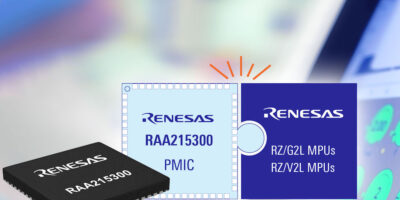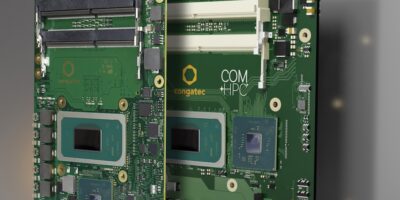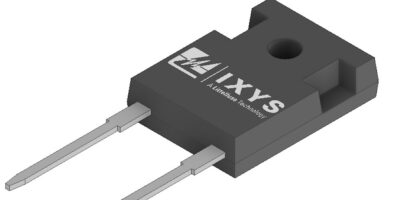Claiming to set a new benchmark of up to 20 PCIe Gen 4.0 lanes, the conga-HPC/cTLH COM-HPC Client Size B modules (120 x 120mm) and conga-TS570 COM Express Basic Type 6 modules (125 x 95mm) will be available from congatec. They will be based on scalable 11th Gen Intel Core vPro, Intel Xeon W-11000E, and Intel Celeron processors, with selected variants for extreme temperatures ranging from -40 to +85 degrees C.
The modules target the most demanding IoT gateway and edge computing applications, says congatec. They are built on Intel’s 10nm SuperFin technology in a two-package design with dedicated CPU and platform controller hub (PCH) to set the new bandwidth benchmark of up to 20 PCIe Gen 4.0 lanes for massive connected real-time IIoT gateway and intelligent edge computing workloads.
To process enormous workloads, the modules have up to 128Gbyte DDR4 SO‑DIMM RAM, integrated AI accelerators and up to eight high performance CPU cores that achieve up to 65 per cent gain in multi-thread performance and up to 32 per cent gain in single-thread performance. Visualisation, auditory and graphics intensive workloads are boosted up to 70 per cent compared to predecessors, says congatec, to enhance immersive experiences. Coupled with support for 8K HDR videos for diagnostic, the modules can be used in surgery, medical imaging and e-health edge applications. Combined with the platform’s AI capabilities and the comprehensive Intel OpenVINO toolkit, doctors can gain easy access and insights into deep learning based diagnostic data, advised congatec.
The integrated Intel UHD graphics supports up to four 4K displays in parallel. It can process and analyse up to 40 HD 1080p/30 frames per second video streams in parallel for 360 degree views in all directions. AI infused massive vision capabilities will find applications in factory automation, machine vision for quality inspection in manufacturing, safe spaces and cities, as well as collaborative robotics and autonomous vehicles in logistics, agriculture, construction and public transport.
Both form factors support up to 128Gbyte DDR4 SO-DIMM memory with 3200 Mtransfers per second and optional error code correction (ECC). To connect peripherals with massive bandwidth the COM-HPC modules support 20 PCIe Gen 4 lanes (x16 and x4), and the COM Express versions support 16 PCIe lanes. Designers can leverage 20 PCIe Gen 3 lanes with COM-HPC, and eight PCIe Gen 3 lanes on COM Express.
To support ultra-fast NVMe SSD, the COM-HPC module provides 1x PCIe x4 interface to the carrier board. The COM Express board has NVMe SSD onboard to use all native Gen 4 lanes supported by the new processor. Storage media can be connected via 2x SATA Gen 3 on COM-HPC, and 4x SATA on COM Express.
The COM-HPC module offers latest 2x USB 4.0, 2x USB 3.2 Gen 2, and 8x USB 2.0 and the COM Express module offers 4x USB 3.2 Gen 2 and 8x USB 2.0 in compliance to the PICMG specification. For networking, the COM-HPC module offers two 2.5 GbE and the COM Express module executes one GbE.
Sound is provided via I2S and SoundWire in the COM-HPC version, and HDA on the COM Express modules.AI and deep learning inference algorithms can seamlessly run either massively parallel on the integrated GPU, or on the CPU with built-in Intel Deep Learning Boost that combines three instructions into one, accelerating inference processing and situational awareness.
The COM-HPC Client and COM Express Type 6 platforms have integrated safety functions for the fail-safe operation of many mobile vehicles and robots and stationary machinery. Real-time support is provided by RTOSes such as Real Time Linux and Wind River VxWorks with native support from Real-Time Systems’ hypervisor technology, which is also officially supported by Intel.
Further real-time capabilities include Intel Time Coordinated Computing (Intel TCC) and Time Sensitive Networking (TSN) for real-time connected IIoT/industry 4.0 gateways and edge computing devices.
https://www.congatec.com







